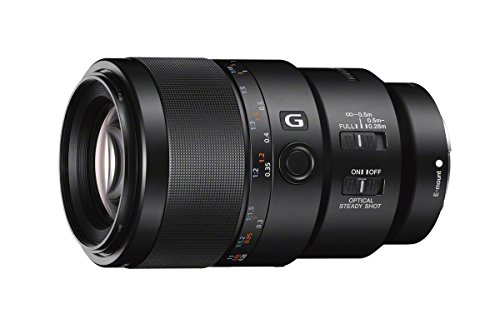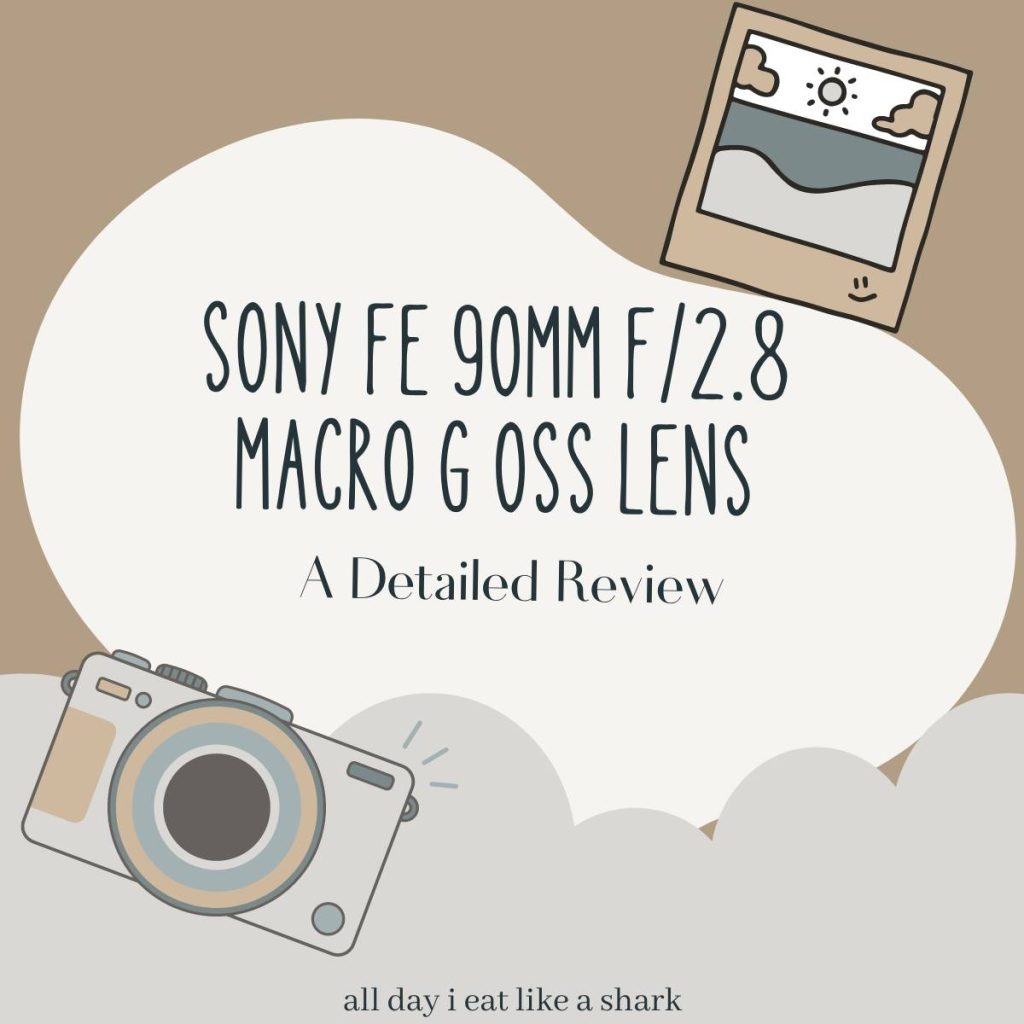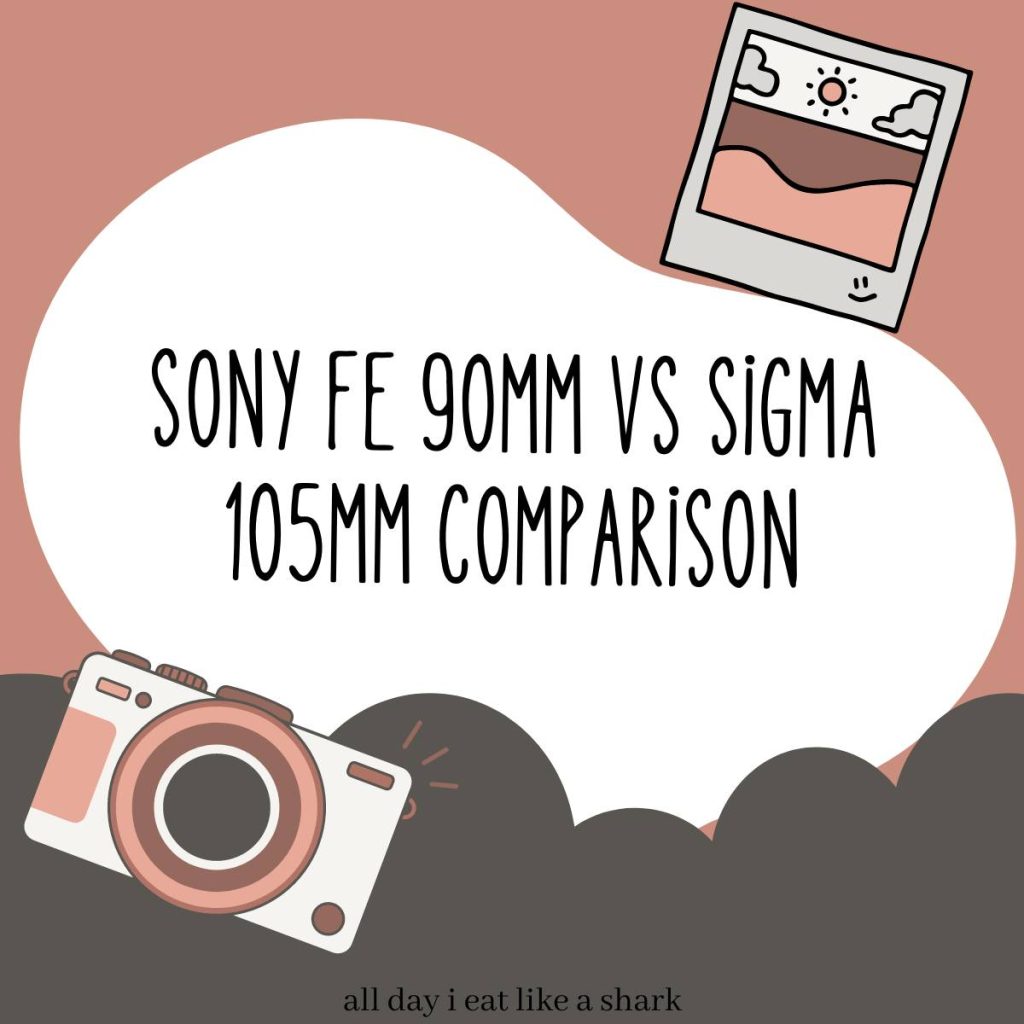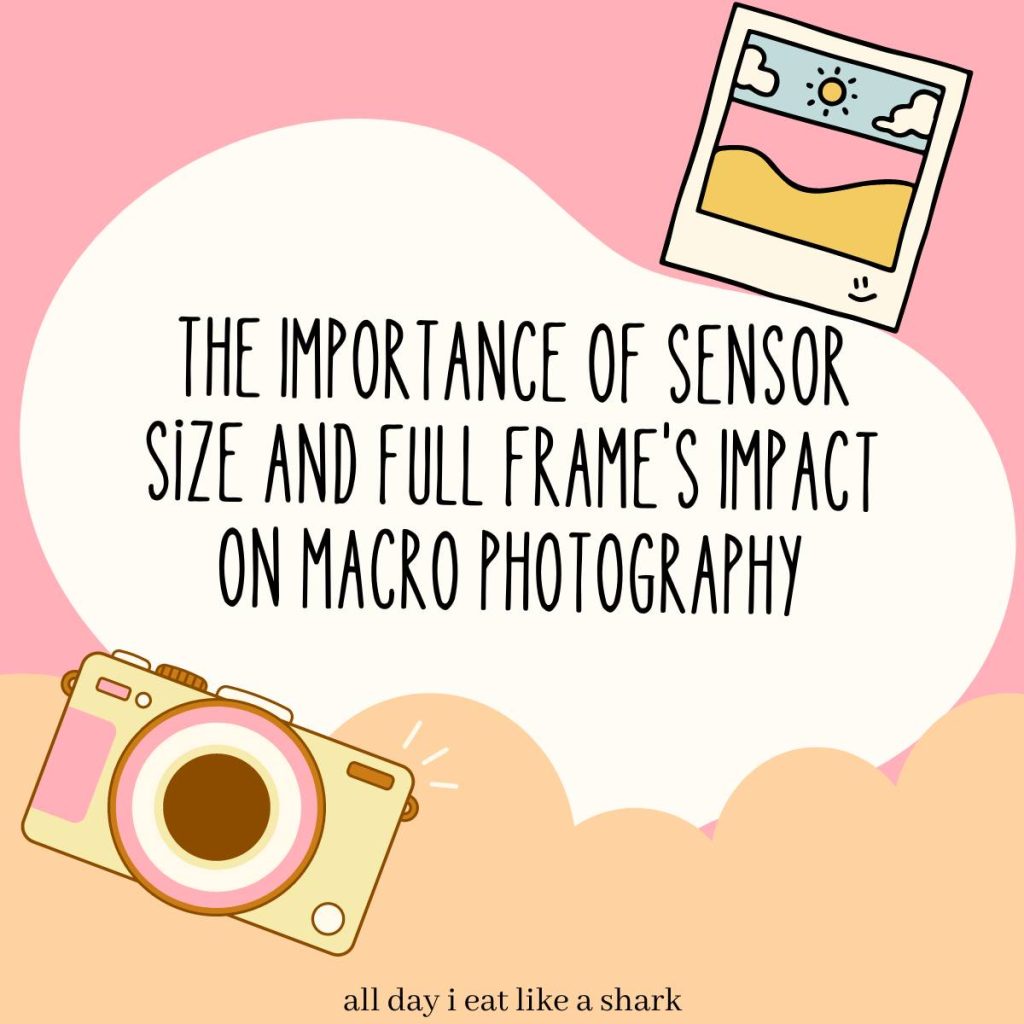
The Sony FE 90mm f/2.8 Macro G OSS is a macro lens designed for Sony’s full-frame E-mount cameras.
It can also be used on Sony’s APS-C E-mount cameras, where it will have an equivalent focal length of 135mm.
It can focus as close as 28cm, which enables a 1:1 magnification ratio or life-size reproduction of the subject on the sensor.
It also has an optical image stabilizer (OSS) that helps reduce camera shake and blur.

Pros of Sony FE 90mm:
Very sharp
The lens produces very sharp images across the frame, even at wide-open apertures.
It has minimal field curvature and chromatic aberrations. It also handles diffraction well up to f/16.
Smooth bokeh
The lens has a 9-blade circular diaphragm that creates a smooth and pleasing bokeh effect.
The out-of-focus areas are rendered softly and naturally, especially at close distances and wide apertures.
Fast and accurate autofocus
The lens has a DDSSM (Direct Drive Super Sonic Wave Motor) that drives the autofocus system.
It is fast, quiet, and accurate, even for extreme close-ups.
It also has a focus limiter switch that can speed up the autofocus performance
by locking out either the short or the long end of the focus range.
Convenient controls
The lens has a push-pull focus ring that can switch between auto and manual focus modes by snapping it backwards or forwards.
It also has a customizable focus hold button that can be assigned to various functions, such as eye AF or focus lock.
Weather-resistant
The lens has a robust and durable construction that is dust and moisture-resistant.
It also has a Nano AR Coating that reduces ghosting and flare caused by internal reflections.
Cons of Sony FE 90mm:
Lackluster stabilization
The lens has an OSS (Optical Steady Shot) that provides image stabilization and compensates for camera shake.
However, it is not very effective at full macro magnification, where even the slightest movement can cause blur.
A tripod is recommended for serious macro work.
Fairly expensive
The lens is not cheap, as the body only costs thousands.
This can be a significant investment for beginners or hobbyists who have a limited budget.
There are cheaper alternatives available, such as the Tamron 90mm f/2.8 Di Macro VC USD or the Sigma 105mm f/2.8 DG DN Macro Art.
Large size and weight
The lens is not very compact or lightweight, as it measures 79 x 131 mm and weighs 602 g.
This can make it less portable and more cumbersome to carry around or use for long periods.
It also requires a 62mm filter size, which can add to the cost and bulk.

Some of the ideal use cases for this lens are:
Food photography
The lens is great for capturing the details and textures of food, as well as creating a shallow depth of field and a smooth bokeh effect.
It can also handle different lighting conditions well, thanks to its fast aperture and high image quality.
Flower photography
The lens is ideal for photographing flowers, as it can reproduce their colors and shapes with accuracy and clarity.
It can also isolate them from the background and create a pleasing contrast between sharpness and blur.
Portrait photography
The lens can also be used for portrait photography, as it has a medium telephoto focal length that can create a flattering perspective and compression effect.
It can also produce sharp images with smooth skin tones and natural bokeh.
Some of the non-traditional uses for this lens are:
Wildlife photography
The lens can also be used for wildlife photography, as it has a long enough reach to capture distant animals without disturbing them.
It can also produce sharp images with fast autofocus and image stabilization.
Video recording
The lens can also be used for video recording, as it has a quiet autofocus motor and an image stabilizer that can reduce camera shake and noise.
It can also produce smooth and cinematic footage with its fast aperture and bokeh effect.

Some other points or factors that would help you decide if you should buy this lens vs a zoom lens or other macro lens:
Working distance
The working distance is the distance between the front of the lens and the subject at the minimum focus distance.
A longer working distance can be useful for avoiding shadows, reflections, or disturbing the subject, especially when shooting insects or other live creatures.
A shorter working distance can be useful for getting closer to the subject and filling the frame with more details.
The Sony FE 90mm f/2.8 Macro G OSS has a working distance of about 14cm, which is fairly good for a macro lens.
Image quality
The image quality of a lens depends on various factors, such as sharpness, contrast, color rendition, distortion, vignetting, flare, and bokeh.
A macro lens usually has a high image quality, as it is designed to capture fine details and textures.
A zoom lens usually has a lower image quality, as it has more optical elements and compromises to cover a wide range of focal lengths.
However, some zoom lenses have a macro mode or feature that can improve their image quality for close-up shots.
Versatility
The versatility of a lens depends on how well it can perform in different situations and for different subjects.
A macro lens is usually specialized for close-up photography, but it can also be used for other purposes, such as portrait, landscape, or wildlife photography.
A zoom lens is usually more versatile, as it can cover a wide range of distances and angles of view with a single lens.
However, some zoom lenses have a limited aperture range or magnification ratio that can limit their performance for certain subjects.
Cost
The cost of a lens depends on various factors, such as brand, quality, features, and demand.
A macro lens is usually more expensive than a zoom lens of similar focal length and aperture rating, as it has more advanced optics and mechanics.
However, some macro lenses are more affordable than others, depending on their specifications and popularity.
A zoom lens is usually cheaper than a macro lens of similar quality and performance, as it has more mass production and competition.
However, some zoom lenses are more expensive than others, depending on their range and features.



Konnichiwa! (Hello!) I'm Pat Tokuyama, a Japanese tofu cookbook author, who travels for music, food, and adventure. If you like Japanese tea, checkout some of the newestorganic japanese tea, matcha bowls and noren and more!
** Curious about the Plant Based Japanese Cooking Club? ** Learn more here!
Size and weight
The size and weight of a lens depend on various factors, such as focal length, aperture rating, optical design, and construction.
A macro lens is usually larger and heavier than a zoom lens of similar focal length and aperture rating, as it has more complex optics and mechanics.
However, some macro lenses are more compact and lightweight than others, depending on their specifications and design.
A zoom lens is usually smaller and lighter than a macro lens of similar quality and performance, as it has fewer optical elements and simpler mechanics.
However, some zoom lenses are larger and heavier than others, depending on their range and features.
Conclusion
the Sony FE 90mm f/2.8 Macro G OSS is a highly capable lens for macro photography.
Its sharpness, smooth bokeh, and fast autofocus make it a great choice for capturing intricate details and textures.
While it may have limitations in terms of stabilization and cost, its versatility extends to food, flower, and portrait photography, as well as wildlife photography and video recording.
Overall, the Sony FE 90mm f/2.8 Macro G OSS lens is a reliable and high-performing option for macro enthusiasts and professionals.







Konnichiwa! (Hello!) I'm Pat Tokuyama, a Japanese tofu cookbook author, who travels for music, food, and adventure. If you like Japanese tea, checkout some of the newestorganic japanese tea, matcha bowls and noren and more!
** Curious about the Plant Based Japanese Cooking Club? ** Learn more here!